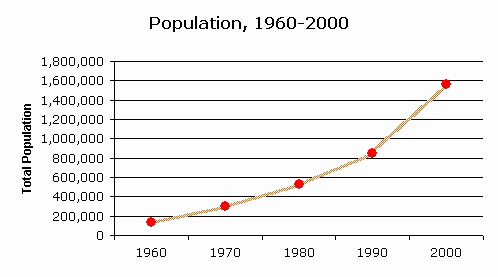Gambling on the Future

By the time most of you read this, Las Vega’s newest resort the Wynn Las Vegas will have opened. This 2.7 billion dollar spectacle features a 50-story hotel structure featuring 2700 rooms, 18 restaurants, a few dozen high end retailers, one full-service Ferrari and Maserati dealership, an art gallery and theater complex. Outside, in addition to the usual pool and spa, the Wynn features a full sized 18-hole golf course with a number of little lakes scattered around for good measure. This being Las Vegas, it also contains a casino, though these days that fact usually gets lost somewhere in the overarching theme that most of these marketing giants wrap themselves in. Finally should the 197 acres of sheer extravagant fun not prove exciting enough, Wynn has an additional 20 acres of Strip frontage available to build whatever Las Vegas’ next “new thing” is.
.
Lost somewhere in the nicely manicured greens or super-cooled casino floor is a contemplation of the long term future of this project or the city as a whole. For if the looming energy crisis threatens to slowly squeeze the life out of much of the Los Angeles Basin, it most likely will obliterate Las Vegas. The city and all that is contained inside is situated in one of this country’s hottest and driest regions and as such requires almost heroic measures to make it suitable for year-round human inhabitation. Huge amounts of water must be imported to support the rapidly growing human population and their thousand of acres of (non-native) landscaping. Cheap gas, diesel and jet fuel are required to keep the stores stocked with food, the resorts stocked with people and the local economy stocked with money. Massive quantities of electricity are required to light the night sky, power those mega-resorts and generally keeping everyone from baking to death under the hot Las Vegas weather. With these underlying facts and growing prospects for both energy and water shortages, you would assume that this city, more so than others, would sit up and pay attention.
.
Instead it is full speed ahead. Growth continues at phenomenal rates (85% in the 1990’s, highest rate in the US), showing little evidence of slowing halfway through this decade. New arrivals from California, Mexico and a number of cold weather states continue to stream in year after year, searching for their piece of the American Dream somewhere out amidst the cactus and the sagebrush. It’s not just people flooding Las Vegas. Money continues to flow in, and not just in the form of multi-billion dollar casino-resort ventures on the Strip. Millions of dollars have been invested in Las Vegas area real estate projects ranging from thousands of tract homes to office parks, shopping centers and other trappings of Suburbia, USA. Like everywhere else, housing prices there have risen smartly (36.2% last year, also the highest rate in the country).

To many, this rapid growth is a source of civic pride, even if it is a hassle to have to open a new elementary school every few weeks or cope with several hundred new residents each day. At least the civic boosters can revel in the fact that this one time train stop has overtaken a number of old Eastern cities in size. Whether they are from California, the upper Midwest or southern Mexico, few (if any) new residents question the wisdom of pulling up stakes and moving to one of the 20th Century’s most egregious planning mistakes. Unlike other locations in this country, which may be able to retrofit themselves towards a low energy paradigm, Las Vegas has no such options. With scant native water resources, a huge dependence on cheap and plentiful electricity and a land use and marketing plan focused on cheap-oil driven entertainment tourism and growth-driven construction jobs, post-Peak Las Vegas will be a bleak place indeed.
.
Barring a calamitous crash or global conflict, the life will squeezed then squashed out of Las Vegas over a period of several years. The city’s main economic engine is highly dependent on the continuation of cheap energy-driven tourism and perpetual construction growth. Both industries are highly susceptible to a downturn in the economy, which would almost certainly accompany an overall decline in energy availability. The loss of those sectors would render over a hundred thousand jobless. The smart ones would leave. The rest would remain awaiting an end to an economic downturn that would never arrive. How long the city remains inhabitable all depends on how long the lights can be kept on and the water and food flowing in. The last item is exceptionally important given how the surrounding hinterlands have little to no chance of seeing the commencement of viable cultivation activities needed to support a bloated local population.
.
.
In all likelihood, none of those considerations are being considered by the local politicians, the gaming industry, city and county planners or the general population. Everybody in Vegas continues to go about their daily business, gambling on the continuation of unceasing growth and the cheap energy lifestyle. In the end, that is one gamble even the house will lose.

